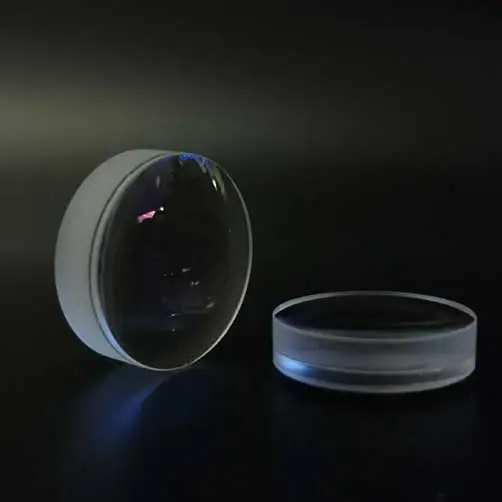
When developing a new type of infrared thermal imager, engineers and their managers must consider factors such as application conditions, operating bands, minimum resolution, pixel size, environmental adaptability, and production capacity in forming its solution. However, the factor that affects these factors is the IR lens.
The IR lens is an indispensable component of an infrared thermal imager. Its function is to converge the infrared radiation of the target onto the infrared detector. After photovoltaic conversion and image processing, a well-contrasted image is finally formed. The quality of the IR lens largely determines the performance of the infrared thermal imager.
Infrared thermal imagers generally operate in three wavelength bands: short wave, medium wave, and long wave. For some special occasions, infrared thermal imagers need to operate in multiple bands. The IR lens should be specially designed according to its operating band to optimize its performance. The infrared lens material used for IR lenses in different bands are also different.
The lens forms an image to fill the infrared detector. Generally, the focal plane of the infrared detector is rectangular or square, while the image formed by the IR lens is a rotationally symmetric circular area. The lens must create a diameter equal to or larger than the diagonal of the focal plane array at the focal plane of the detector. If the image cannot completely fill the detector area, the resulting effect is called vignetting, which will cause a decrease in the energy of the field of view at the edge of the image.
Generally speaking, IR lenses are not allowed to have vignetting. For lenses used for infrared refrigerant detectors, if there is vignetting in the lens, it cannot meet the design principle of 100% cold aperture efficiency, and scattered radiation will affect the performance of the infrared thermal imager.
The IR lens is usually identified by its focal length. When the focal length increases, the field of view of the lens becomes narrower. Conversely, as the focal length decreases, the field of view becomes wider.
Infrared lenses are generally divided into single-field lenses, multi-field lenses, and continuously variable focus lenses. Infrared thermal imagers with continuously variable focus lenses are widely used in many fields because they can search for targets and continuously track targets at different distances.
The F-number of the IR lens determines how much target radiation energy enters the infrared thermal imager. The smaller the F-number, the larger the size of the IR lens under the same focal length, and the more infrared radiation obtained when used with the corresponding detector, the higher the sensitivity of the infrared thermal imager.
However, in some cases where weight and volume requirements are strict (such as UAV optoelectronic pods), the application of some large F-number infrared thermal imagers is becoming more and more common on the premise of meeting the system indicators. Small optoelectronic pods with mid-wave F5.5 devices and lenses are increasing.
For non-cooled infrared detectors, there is no cold screen in Duva like cooled detectors. For the IR lens used for non-cooled infrared detectors, the choice of F-number is relatively flexible, but due to the low sensitivity of non-cooled detectors, IR lenses with small F-numbers are generally used.
The depth of focus is the range of the farthest and closest distances that the lens can see clearly without focusing. The depth of field is not only related to the focal length, F-number, imaging quality, and the set alignment and imaging distance of the lens, but also to the size of the detector pixel. Generally speaking, the larger the F-number, the shorter the focal length, and the larger the pixel size of the detector, the larger the depth of field. The depth of field range is also different for different alignment planes.
The nearest imaging distance of the lens and the depth of field are two different concepts. The nearest imaging distance is the minimum object distance that the lens can clearly image when focusing.
The imaging quality of the lens is generally evaluated by optical transfer function (MTF), distortion, and point spread function. The imaging quality of the lens should be matched to the pixel size of the detector as much as possible. If it cannot be matched, it should be judged whether the infrared thermal imager is an optically limited system or a detector-limited system to determine the detection and recognition capabilities of the infrared thermal imager for targets.
Generally speaking, the imaging quality at the center of the lens field of view is better than that at the edge of the field of view.
The refractive index of most infrared materials is very high. The lens in the IR lens needs to be coated with high-efficiency anti-reflection film to improve the transmission rate of the IR lens.
As the number of lenses in the lens increases, the transmittance of the lens gradually decreases. The absorption and residual reflection of the lens are the two main factors that reduce the transmittance. The residual reflection will introduce interference (infrared interference is inevitable from the mechanism unless the lens has a transmittance of 100%), affecting the sensory effect and performance of the infrared thermal imager.
